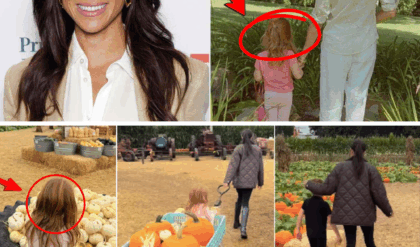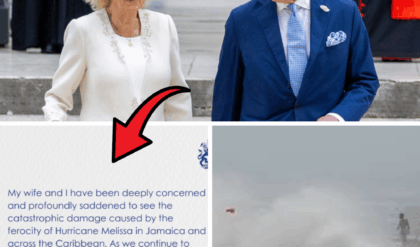In the glittering world of Hollywood, where stories of glamour and fame dominate headlines, there are moments that reveal the raw, unfiltered reality of filmmaking—moments that are as dangerous as they are unforgettable. Jodie Foster, the two-time Academy Award-winning actress and filmmaker, recently shared one such harrowing experience from her early career during an appearance on The Graham Norton Show. At just nine years old, while filming her feature film debut in Disney’s Napoleon and Samantha (1972), Foster found herself in the jaws of a lion, an incident that left her with lifelong scars and a profound fear of felines. This chilling tale, recounted with a mix of humor and disbelief decades later, offers a glimpse into the unpredictable nature of working with wild animals and the resilience of a young actress who went on to become a cinematic icon.
A Child Star’s Early Days
Jodie Foster’s journey in the entertainment industry began long before the lion incident. Born Alicia Christian Foster on November 19, 1962, in Los Angeles, California, she was thrust into the spotlight at the tender age of three, appearing in a Coppertone sunscreen commercial. Her early career was marked by a string of television appearances and commercials, with roles in shows like Mayberry R.F.D., Gunsmoke, and The Courtship of Eddie’s Father. By the time she was cast in Napoleon and Samantha, Foster was already a seasoned child actor, known for her natural talent and professionalism. The film, directed by Bernard McEveety and written by Stewart Raffill, was a family-friendly adventure story about two children, Napoleon (Johnny Whitaker) and Samantha (Foster), who embark on a journey with their pet lion, Major, to avoid being separated from him after the death of Napoleon’s grandfather.
The role was a significant milestone for Foster, marking her transition from television to feature films. However, the production was not without its challenges, particularly when it came to working with the film’s animal co-star. Major, the lion, was played by a trio of big cats: the primary lion, Zamba, a stunt lion for roaring scenes, and a stand-in lion used for less demanding shots. It was the stand-in lion that would forever alter Foster’s perception of the set’s safety.
The Terrifying Incident
During her appearance on The Graham Norton Show in February 2024, Foster recounted the terrifying moment with a blend of amusement and astonishment, though the gravity of the experience was not lost on her fellow guests, including Olivia Colman, Wanda Sykes, and Lorraine Kelly, who listened in stunned silence. The incident occurred after a take was completed, as Foster was walking up a hill on the set in John Day, Oregon. “I was working with the stand-in lion, and I guess he had a little piano wire that was pulling him,” Foster explained. “We finished the take, and all I remember is seeing his mane come around, and then he picked me up sideways, shook me in his mouth, and turned me around.”
The image of a nine-year-old girl caught in the jaws of a lion is nothing short of nightmarish. Foster described the chaos that ensued as the crew fled in every direction, abandoning their equipment in their haste to escape. “Every single person on the crew was running in the opposite direction, and I’m like sideways, watching everybody—and they took their equipment, too!” she said, her voice tinged with incredulity. The young actress, dazed and confused, initially mistook the shaking for an earthquake, a testament to the surreal nature of the moment. “I’m watching everybody leave, going, ‘What’s happening?’” she recalled.
The lion’s trainer eventually intervened, issuing a stern command: “Drop it!” Thanks to the animal’s rigorous training, the lion obeyed, releasing Foster from its grip. She tumbled to the ground and fled, but the ordeal wasn’t over. “He came after me, put one paw on me, and then just waited like, ‘I got her!’” Foster said, mimicking the lion’s triumphant stance with a laugh. Miraculously, Foster escaped with relatively minor injuries, though the attack left physical scars on her back and stomach, as well as a lifelong ailurophobia—a fear of cats.
The Lion’s Identity and Training
The lion involved in the incident was not Zamba, the primary lion used in the film, as some reports initially suggested. Foster has been vocal in defending Zamba, emphasizing that the attack was carried out by the stand-in lion, a less experienced animal brought in when Zamba was unavailable or uncooperative. Zamba, trained by Ralph Helfer using a method known as “affection training,” was renowned for his gentle demeanor and reliability. Helfer’s approach, which relied on love, patience, and respect rather than dominance, had made Zamba a sought-after animal actor, appearing in numerous films and television shows, including an episode of Gilligan’s Island where he nearly attacked actor Bob Denver.
The stand-in lion, however, lacked Zamba’s temperament and training, and its behavior on set was less predictable. The use of a piano wire to guide the lion’s movements may have contributed to its agitation, though the exact cause of the attack remains unclear. The incident underscores the inherent risks of working with wild animals, even those trained for film work. Despite the precautions taken by the production, including the presence of experienced trainers, the unpredictability of a lion’s instincts proved nearly catastrophic.
Impact on Foster’s Life and Career
The lion attack was a traumatic event for the young Foster, yet it did not deter her from pursuing her acting career. In interviews, she has reflected on the incident with a mix of humor and pragmatism, acknowledging its lasting impact while emphasizing her resilience. “I was in shock and thought it was an earthquake,” she told The Tonight Show in 2008, recounting the same story. “The trainer then said, ‘Drop it,’ and he opened his mouth and dropped me.” The experience left her with a deep-seated fear of cats, a phobia that persists to this day. “I’m terrified of anything in the feline family,” she admitted in a 2013 interview.
Despite the trauma, Foster’s career flourished. Just four years after the incident, she delivered a breakout performance as Iris, a teenage prostitute in Martin Scorsese’s Taxi Driver (1976), earning an Academy Award nomination for Best Supporting Actress. She went on to win two Best Actress Oscars for her roles in The Accused (1988) and The Silence of the Lambs (1991), cementing her status as one of Hollywood’s most formidable talents. Her ability to channel vulnerability and strength in her performances may, in part, stem from experiences like the lion attack, which tested her courage at a young age.
The Broader Context of Animal Safety in Film
Foster’s story also raises important questions about the use of wild animals in film productions, particularly during the 1970s when safety regulations were less stringent than they are today. The Napoleon and Samantha set was not the only one to encounter issues with animal actors; similar incidents occurred on other productions, such as the aforementioned Gilligan’s Island episode involving Zamba. The American Humane Association, which oversees animal welfare on film sets, has since implemented stricter guidelines to protect both animals and human actors, but the risks remain.
Foster’s experience serves as a cautionary tale about the unpredictability of wild animals, even those trained for entertainment purposes. While Zamba’s affectionate training made him a beloved figure in Hollywood, the stand-in lion’s actions highlight the limits of such training. The incident also sheds light on the pressures faced by child actors, who are often placed in challenging or dangerous situations with little agency to protest. Foster’s ability to recount the story with humor suggests a remarkable ability to process and move beyond the trauma, but not all child actors are so fortunate.
A Testament to Resilience
Jodie Foster’s encounter with the lion on the set of Napoleon and Samantha is more than just a shocking anecdote; it is a testament to her resilience and determination. At nine years old, she faced a life-threatening situation with a composure that belied her age, and she emerged to build a career that has spanned over five decades. Her story resonates with fans and aspiring actors alike, who admire her not only for her talent but also for her ability to overcome adversity.
As Foster shared her tale on The Graham Norton Show, the internet erupted with reactions, with fans hailing her as “badass” and “iconic” for her lighthearted retelling of such a terrifying event. “This was one of the coolest/terrifying stories ever told on that couch, and she managed to make it hilarious and light-hearted,” one user wrote on YouTube. Another commented, “Jodie Foster is an amazing raconteur; the humor and wit with which she narrated such a traumatizing childhood event is exceptional.”
In an industry that often glosses over its darker moments, Foster’s willingness to share this story with candor and humor is refreshing. It reminds us that behind the polished facade of Hollywood lies a world of real risks and human experiences. For Foster, the scars on her back and stomach are not just remnants of a childhood trauma but symbols of a life lived boldly in pursuit of her craft. As she continues to captivate audiences with performances in projects like True Detective: Night Country and Nyad, her legacy as a survivor and storyteller only grows stronger.





